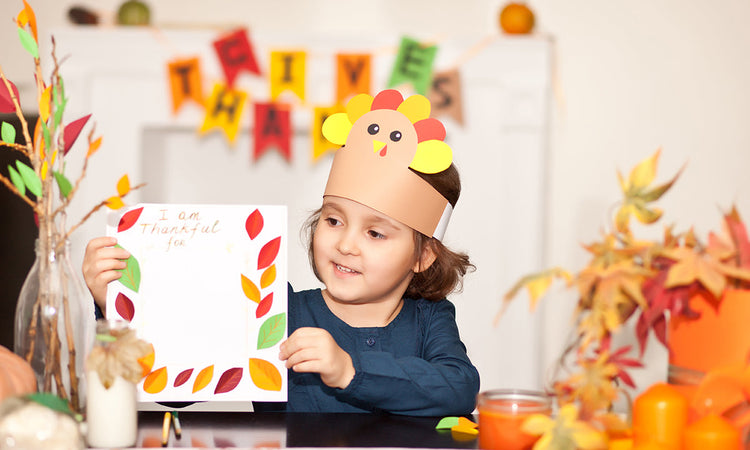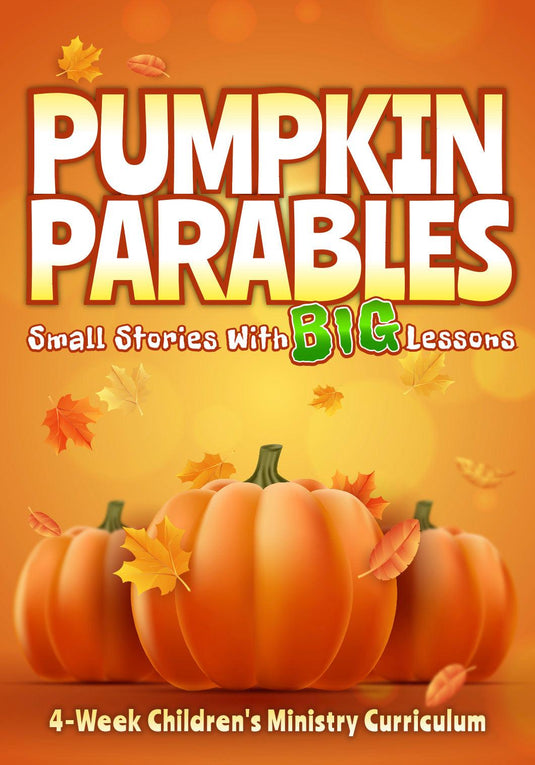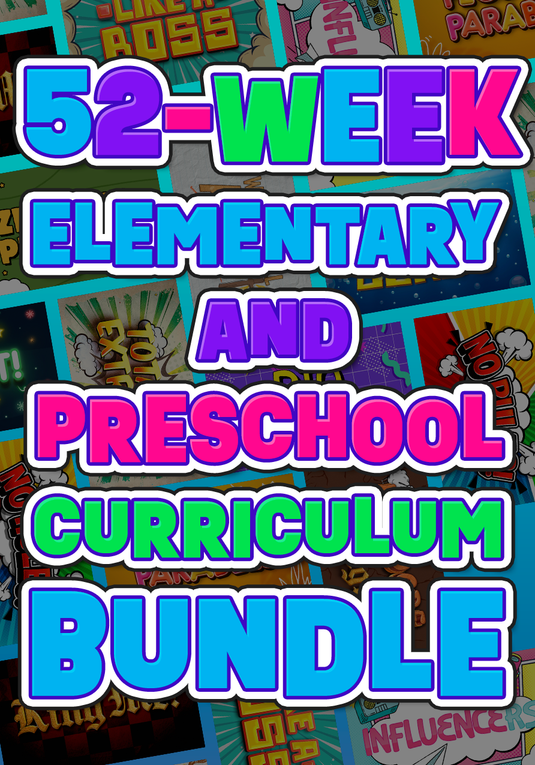Looking for a last-minute Thanksgiving lesson plan? Look no further! While there are several directions you could go as you teach, this free last-minute lesson focuses on the importance of gratitude, regardless of your circumstances. Some kids have easy lives, while others face more challenges. Most are somewhere in between. Your hard and their hard are likely two different challenges, but hardships, nonetheless.
Table of contents
Your Free Last-Minute Thanksgiving Lesson Plan
In this free last-minute Thanksgiving lesson plan for Children's ministry, the bottom line is that kids will learn they can give thanks to God in all circumstances.

Lesson Idea: Be Thankful in All Circumstances!
Main Point & Summary
We can give thanks to God in every situation, no matter what happens.
Memory Verse
“Give thanks no matter what happens. God wants you to thank him because you believe in Christ Jesus.”
Object Lesson: Would You Rather?
Start with a fun icebreaker: ask kids silly “Would You Rather?” questions (such as “Would you rather swim in chocolate or whipped cream?”). Let kids laugh and discuss their answers. Then, connect the game to the lesson: life brings us all kinds of circumstances—some fun, some hard, some silly. Whatever happens, the Bible teaches us to thank God through it all.
Game: Thankful Charades
Write thankful topics (family, home, food, friends, church, school, sports) on slips of paper. Kids take turns acting them out while the group guesses. After each round, remind them: “We can thank God for all these things!”
Free Thanksgiving Games
ABC Thankful List Craft
A sheet of paper for each child
Writing utensils (pencils, pens, markers, etc.)
To reiterate that there is much to be thankful for, make an ABC Thankful List. To do this easy craft, everyone will need a piece of paper and a pencil or other writing utensil. Write down all the letters in the alphabet in list form. Then, work together or in pairs to come up with something that starts with each letter, something to thank God for. For example, the letter A could stand for automobiles and B could stand for basketball.
Encourage kids to take their paper home and look over it each day. Challenge them to pick three to four letters a day, saying a prayer to thank God specifically for those items.
M&M Thankfulness Snack
Share a fun snack of M & M’s and add a lesson to it as your students enjoy the treat. There are six colors of M&M candies.
For each color, kids should name a specific person or thing they are thankful for:
- Brown – a family member
Red – a friend
Orange – something in nature
Yellow – something in their house
Green – something at their church
Blue – something that might not seem good (a tough situation)
Thanksgiving Children's Ministry Lesson
There are numerous places in scripture that God says to praise him in good times and bad. For this lesson, the reading and focus will be on Psalm 34:1-3, as well as 1 Thessalonians 5:18, and remembering the circumstances that surrounded Paul’s life after he became a Christian.
Old Testament Example
Begin your Biblical teaching by referencing the Old Testament in Psalm 34:1-3. Talk about how David wrote this Psalm as a reminder to praise and thank God at all times, in good times and bad. He says to have praise for God ready always on your lips. It's easy to forget or even have negative things to say. We need a constant reminder to lift up praise to the Lord and share it with others. Perhaps when someone sees you going through a rough time, yet still living a life of thankfulness, they will be encouraged.
New Testament Interpreation
Moving on to the New Testament, read 1 Thessalonians 5:18. This is one powerful verse! Paul wrote this letter to the people in the Thessalonian church. Considering his background, he had certainly experienced both good and bad things in his life. He had great joy because of the work he was doing for the Lord, but at the same time, he had great sorrow because of many hardships. During Paul’s life and work, he was shipwrecked, beaten, and put into prison.
Despite all of that, he still penned the words, “Give thanks no matter what happens.” And he meant it with every part of his being. He didn’t say give thanks only when things go your way or when you feel happy. He also answers the question as to why we are to thank God. It’s not just because we feel like it, but rather because we have Jesus.
Student Application
1 Thessalonians 5:18 is a great verse for kids to commit to memory. Be sure you have them find this passage in their Bibles and read it together several times. Then, without looking, say a few words of the verse and see if they can fill in the blanks. Do this a few times, changing up which words you leave out.
Discussion Questions
After studying about being thankful in all circumstances and discussing what that means and looks like, ask a few questions to make sure your students are tracking:
What are some things that David says about praising God?
When does Paul say to give thanks?
Why should you give thanks?
When is a time you’ve been happy/sad and have still remembered to praise and thank God through it?
Lesson Wrap-Up
Review the memory verse together. Ask kids to share examples of how they can thank God this week. Challenge them to use their ABC list to guide their prayers at home. Close with a volunteer prayer thanking God for His goodness in all circumstances.
Suggested Resources
Pin This Lesson For Later

Free Related Products
Suggested Curricula & Lessons
Frequently Asked Questions
Can I expand this Thanksgiving lesson into a series for the whole holiday season?
Sure! Use the ABC Thankful List across multiple weeks, focusing on a few letters each Sunday. You can also explore different Bible stories of thankfulness, like the Ten Lepers, Hannah’s prayer, or Paul and Silas singing in prison.
End your series with a Christmas tie-in by connecting gratitude to God’s greatest gift, Jesus, as the ultimate reason for thankfulness.
What are some alternative Scriptures about thankfulness I could use if I want to go deeper?
Here are three additional Scriptures on thankfulness that you can teach:
Psalm 100:4-5
"Enter his gates with thanksgiving and his courts with praise; give thanks to him and praise his name. For the LORD is good and his love endures forever; his faithfulness continues through all generations."
Colossians 3:15-17
"Let the peace of Christ rule in your hearts, since as members of one body you were called to peace. And be thankful. Let the message of Christ dwell among you richly as you teach and admonish one another with all wisdom through psalms, hymns, and songs from the Spirit, singing to God with gratitude in your hearts. And whatever you do, whether in word or deed, do it all in the name of the Lord Jesus, giving thanks to God the Father through him."
Philippians 4:6-7
"Do not be anxious about anything, but in every situation, by prayer and petition, with thanksgiving, present your requests to God. And the peace of God, which transcends all understanding, will guard your hearts and your minds in Christ Jesus."
How do I connect the theme of thankfulness to the Gospel message for kids?
First, remind kids that our greatest reason for thankfulness is Jesus. He gave His life so we could be forgiven and know God. Explain that gratitude flows from receiving God’s gift of salvation, not just from our good circumstances.
Finally, use John 3:16 as a bridge: we thank God not only for daily blessings but also for the eternal gift of life in Christ.
What if a child is struggling with being thankful because of difficult circumstances?
Always acknowledge their feelings. Remind them God invites honesty in prayer, even when life is hard. And that includes our complicated feelings.
Help them shift their focus to gratitude by encouraging them to thank God for small blessings (friends, food, nature).
Finally, share Bible examples like Paul’s hardships or David’s struggles to show they are not alone in finding it hard to be thankful.
How can I adapt this lesson for younger children vs. older children?
For Young Kids (Age 6 and Younger)
Keep explanations short, use more visuals (pictures, props, puppets), and focus on one key verse (1 Thessalonians 5:18).
For Older Kids
Encourage discussion about real-life struggles and how thankfulness applies, ask them to journal responses, or lead small group sharing.
For a Mixed-Age Group
Pair older children with younger ones for the craft or memory verse game, so older kids help reinforce the lesson.






